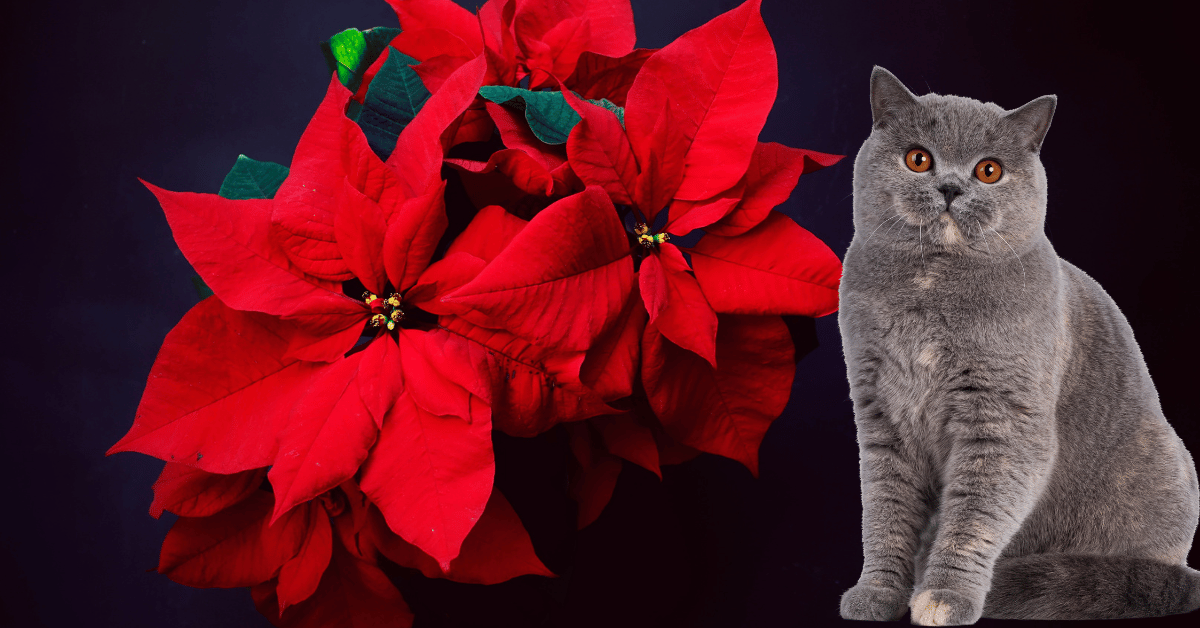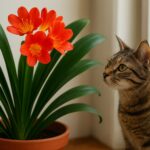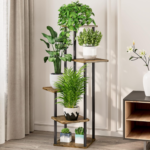Poinsettias are popular holiday plants, instantly recognizable for their bright red and green foliage. They grace homes and offices across the globe during Christmas and winter festivities. However, if you’re a cat owner, you’ve likely heard that poinsettias may pose a threat to your feline friend. This has led to widespread concern and confusion over whether these festive plants are safe to have around pets.
In this article, we’ll explore the facts and myths around poinsettias and cats, how these plants affect felines, and offer safe alternatives for pet-friendly holiday decorating. Let’s dive deeper to keep your cat healthy and your home festive.
About Poinsettias

Poinsettias (botanical name: Euphorbia pulcherrima) are among the most iconic holiday plants in the world, especially popular during the Christmas season. Known for their vibrant red, white, or pink bracts (which are often mistaken for flowers), poinsettias are native to Central America, particularly southern Mexico. In their natural environment, they grow as shrubs or small trees and can reach heights of up to 13 feet.
The colorful parts of the poinsettia are not actual petals but modified leaves called bracts. The true flowers are the small, yellow clusters at the center of the bracts, known as cyathia. These flowers are not very noticeable, as the plant’s main attraction is its bright foliage. The plant blooms naturally in winter, which makes it a perfect symbol for holiday decorating.
Poinsettias were introduced to the United States in the 1820s by Joel Roberts Poinsett, the first U.S. ambassador to Mexico, from whom the plant gets its common name. Today, they are cultivated in greenhouses around the world and are available in various shades and sizes.
What Makes Poinsettias Potentially Toxic?
Poinsettias (Euphorbia pulcherrima) belong to the Euphorbiaceae family, which includes many plants known for their irritating latex sap. The white, sticky sap found in poinsettias contains diterpenoid euphorbol esters and saponin-like detergents. These compounds can cause irritation when they come into contact with mucous membranes or the skin. For cats, this can mean mild oral or gastrointestinal discomfort if they chew on the plant.
The myth of the poinsettia being highly toxic stems from a 1919 case in which a child allegedly died after consuming a leaf. However, this was never scientifically confirmed, and modern toxicology does not support this claim. Today, the ASPCA (American Society for the Prevention of Cruelty to Animals) classifies poinsettias as non-lethal to cats and dogs, stating that they typically cause only mild to moderate symptoms that resolve on their own.
Ingesting small amounts may cause symptoms such as drooling, vomiting, or mild diarrhea. Skin exposure to the sap can lead to redness or itching, though this is uncommon. Severe toxicity is unlikely unless a large amount is consumed—something most cats won’t do due to the plant’s bitter taste.
Symptoms of Poinsettia Ingestion in Cats

If your cat chews or bites into a poinsettia plant, it may begin showing symptoms within a few minutes to a few hours. Fortunately, these symptoms are usually mild and short-lived. However, every pet is different, and it’s essential to monitor your cat closely if you suspect exposure.
Common symptoms include:
- Drooling or excessive salivation
- Pawing at the mouth or face
- Vomiting or gagging
- Mild to moderate diarrhea
- Lack of appetite for a short period
- Irritation around the mouth or lips
- Watery or irritated eyes (if sap comes into contact)
If the sap comes into direct contact with your cat’s skin or eyes, it may cause localized redness, swelling, or itchiness. Again, these reactions are usually self-limiting, meaning they go away on their own without the need for aggressive treatment. Cats with sensitive systems or pre-existing conditions may experience stronger reactions.
While serious complications are rare, it’s always wise to contact your vet or a pet poison helpline if your cat is showing unusual or prolonged symptoms. You can also gently rinse your cat’s mouth or skin with water to remove any sap residue. Never induce vomiting or give human medications unless directed by a vet.
What to Do if Your Cat Eats a Poinsettia?
If you notice your cat munching on a poinsettia or suspect it has ingested part of the plant, don’t panic. In most cases, the reaction will be mild and not life-threatening. The first step is to gently remove any remaining plant material from your cat’s mouth or fur, if visible. Wash the affected area with lukewarm water to remove sap and reduce irritation.
Next, observe your cat’s behavior for the next few hours. Look for symptoms like vomiting, drooling, or discomfort. If symptoms appear, do not give your cat any food or medication until you speak with a veterinarian. Most cats recover quickly without any treatment, but if vomiting continues for more than 24 hours or if your cat appears lethargic or distressed, consult a vet immediately.
You can also call the ASPCA Animal Poison Control Center (APCC) or Pet Poison Helpline for advice. Be ready to provide information like your cat’s weight, how much of the plant was consumed, and the time of exposure. These professionals can guide you on whether a vet visit is necessary.
Keep in mind: large-scale poisoning from poinsettias is extremely rare in cats. Prompt, calm action and observation are usually enough to manage the situation safely.
Preventing Poinsettia Poisoning in Cats
The best way to protect your cat from poinsettia poisoning is through prevention. If you love decorating with poinsettias during the holidays but have a curious cat at home, you’ll want to take steps to ensure they don’t get close to the plant.
Here are some practical tips:
- Keep poinsettias out of reach, preferably in rooms your cat doesn’t access. Place them on high shelves or in hanging baskets.
- Train your cat using safe deterrents like citrus peels or motion-activated sprays near the plant.
- Use barriers like plant cages or decorative glass domes to physically restrict access.
- Supervise your pet, especially if the plant is placed somewhere accessible during the day.
- Consider artificial poinsettias, which offer the same festive look without the risk (though avoid ones made with harmful materials or dyes).
It’s also smart to learn your cat’s behavior. Some cats are naturally disinterested in plants, while others are habitual chewers. If your feline falls into the latter category, it might be best to skip real poinsettias altogether and opt for safer plant alternatives.
Safe Alternatives to Poinsettias for Cat-Friendly Homes

For cat owners who love plants but want to avoid even mild risks, there are many pet-safe alternatives to poinsettias that still offer a festive, seasonal vibe. These alternatives can give your home that holiday flair without worrying about potential toxicity.
Here are a few popular, non-toxic holiday plant options:
- Christmas Cactus (Schlumbergera) – A vibrant plant with pink, red, or white blooms. It’s non-toxic to cats and easy to care for.
- Spider Plant (Chlorophytum comosum) – While not specifically festive, its green-and-white striped leaves can complement holiday décor.
- Areca Palm or Parlor Palm – Pet-safe palms that bring greenery into your space and fit well with holiday arrangements.
- Orchids (Phalaenopsis) – Elegant and safe for cats, orchids are perfect for decorating tables or gift baskets.
- Herbs like rosemary and thyme – Safe for cats in small amounts and offer both fragrance and charm for holiday centerpieces.
If you still want the classic look of poinsettias, opt for high-quality silk or artificial versions. These come in a variety of colors and sizes and can be reused every year. Just make sure they don’t have small detachable pieces that could pose a choking hazard.
Conclusion
While poinsettias are not the plant of doom they were once thought to be, they’re not entirely harmless either. For most cats, the plant poses minimal risk, and any ingestion will likely result in only mild, short-lived symptoms like vomiting or drooling. However, it’s still important to be proactive and cautious, especially if your cat tends to chew on household plants.







